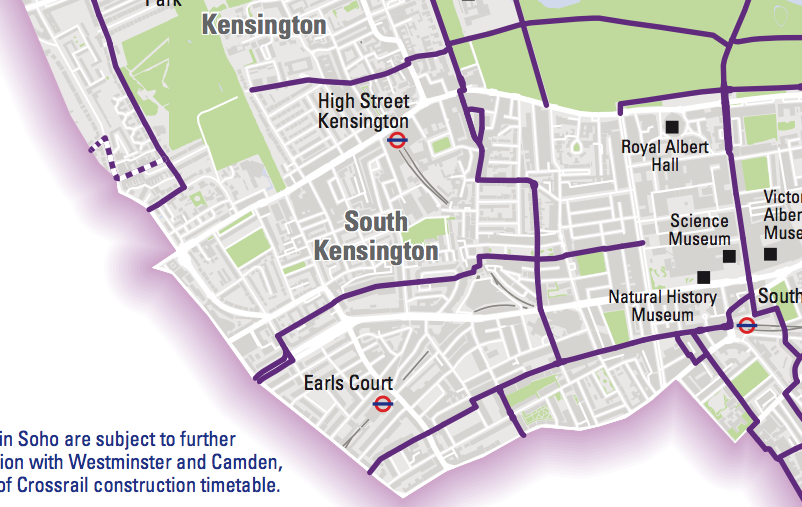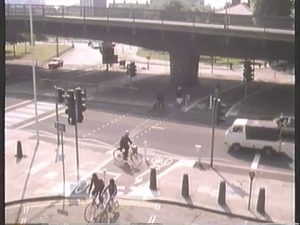After seeing that Superhighway 9 wasn’t included on the recent Central London Grid consultation by Transport for London(TfL), our coordinator made a Freedom of Information request to TfL and Kensington and Chelsea council to try and understand why. This was by no means a preferred option to understand how decisions had been reached, but with only blog posts sharing emails between other campaigners and the council and no detailed text explaining Kensington and Chelsea’s grid forthcoming it seemed a reasonable response. We have so far only had a response from the Royal Borough of Kensington and Chelsea with TfL currently expecting to produce a response in another week or two, conveniently after the final Superhighways announcement is likely.
Even from the Kensington and Chelsea response alone, we have gained significant new information:
- It confirms that plans for Superhighway 9 have focussed on the issues of Kensington High Street
- When the cycle vision was launched it was assumed by Andrew Gilligan that Superhighway 9 would not go ahead due to RBKC’s lack of support
- In the cycle vision as presented to RBKC the only superhighway into the West of London was cycle crossrail up on the Westway
- Kensington and Chelsea’s original objection to the superhighway was to blue paint on aesthetic grounds
- It was presumed without creating mockups that Kensington and Chelsea would object to segregation
- Mockups were then created both of segregation on Kensington High Road and of cycling in Holland Park to try and get these features onto the Central London Grid
- It was felt by RBKC that a quietway route using Holland Park and Holland Road would be a viable alternative but it also failed to make it onto the Central London Grid

We continue to await details from TfL to get their side of the conversation but it is plain that Kensington and Chelsea are not fully on board with the Mayor’s Cycling Vision and are not interested in any large scale changes to their roads. In their own words “The Central London Grid will not mean any significant interventions and certainly no segregation on RBKC roads” – in which case, what is it for? As such, we are now even more sceptical of their commitment to the Central London Grid and even though there are clearly efforts in here to create a route using Holland Road and making better crossings even in this correspondence it is admitted that it is highly likely to have at least one dismount section even without Holland Park not permitting through cycling.
We stand by our comments on the Central London Grid, that it is vital to make an intervention on the main roads in West London, as by RBKC’s own words on Kensington High Street “there are no continuous alternative east-west routes nearby”. It is very disappointing that segregation is being blocked without so much as a consultation or open conversation with the people who ride upon it and their own numbers are being used as justification not to segregate. This is not thinking that will lead to an improvement in conditions on the roads or a further reduction in collisions in the streets of Kensington and Chelsea. It should be remembered that Kensington High Street is very effectively paralleled as an East-West route by the A4 which provides a much greater capacity and safety for motor vehicles than anything presented to vulnerable road users in the area.
For history on the earlier stages of Superhighway 9, please see our page on the earlier shared designs. We will work hard to uncover more details of what would have happened with Superhighway 9 were it built, should the cancellation of it as a route from Hammersmith into London via Kensington and Chelsea now be confirmed. This could well be in the coming days.



















